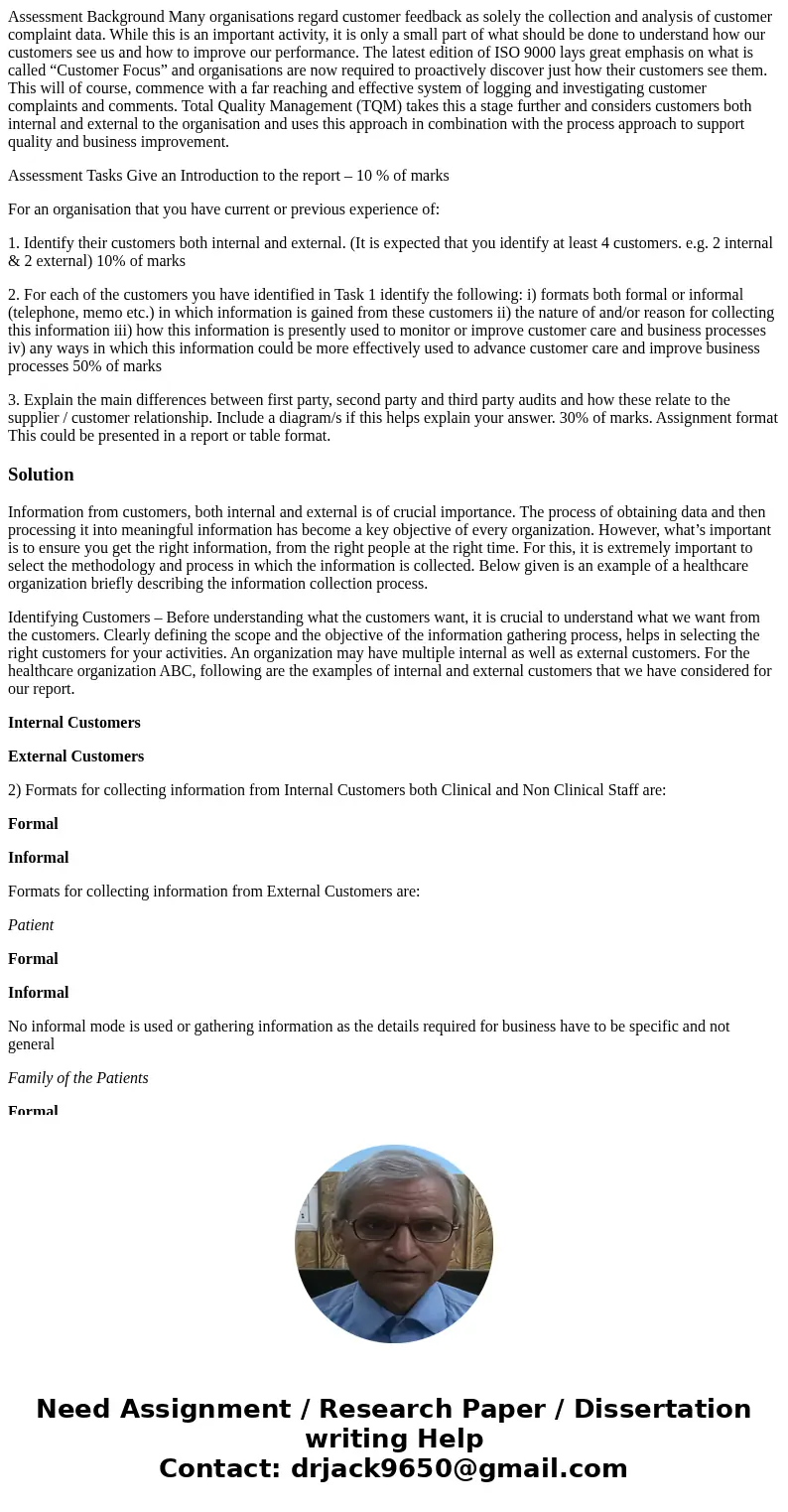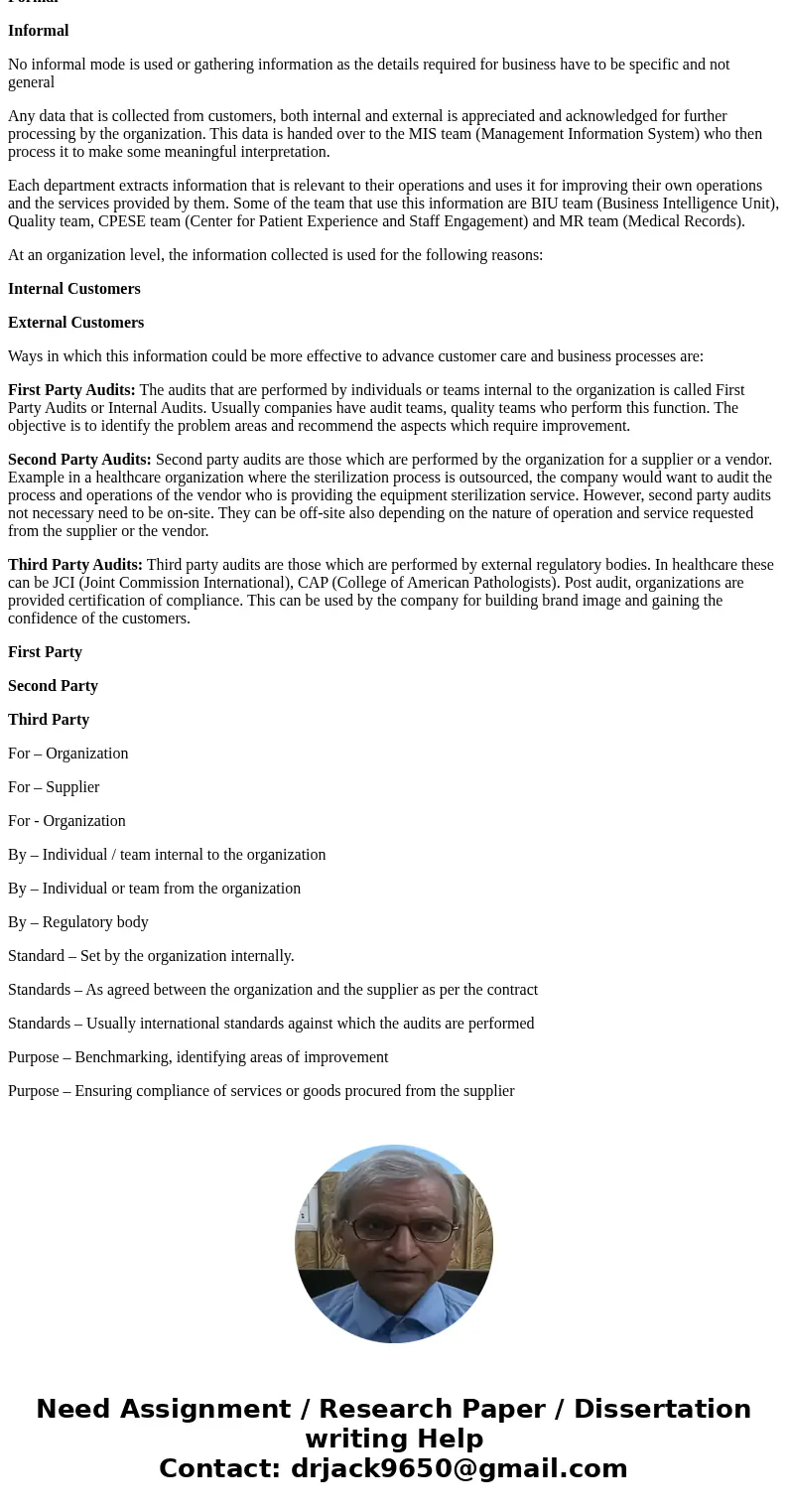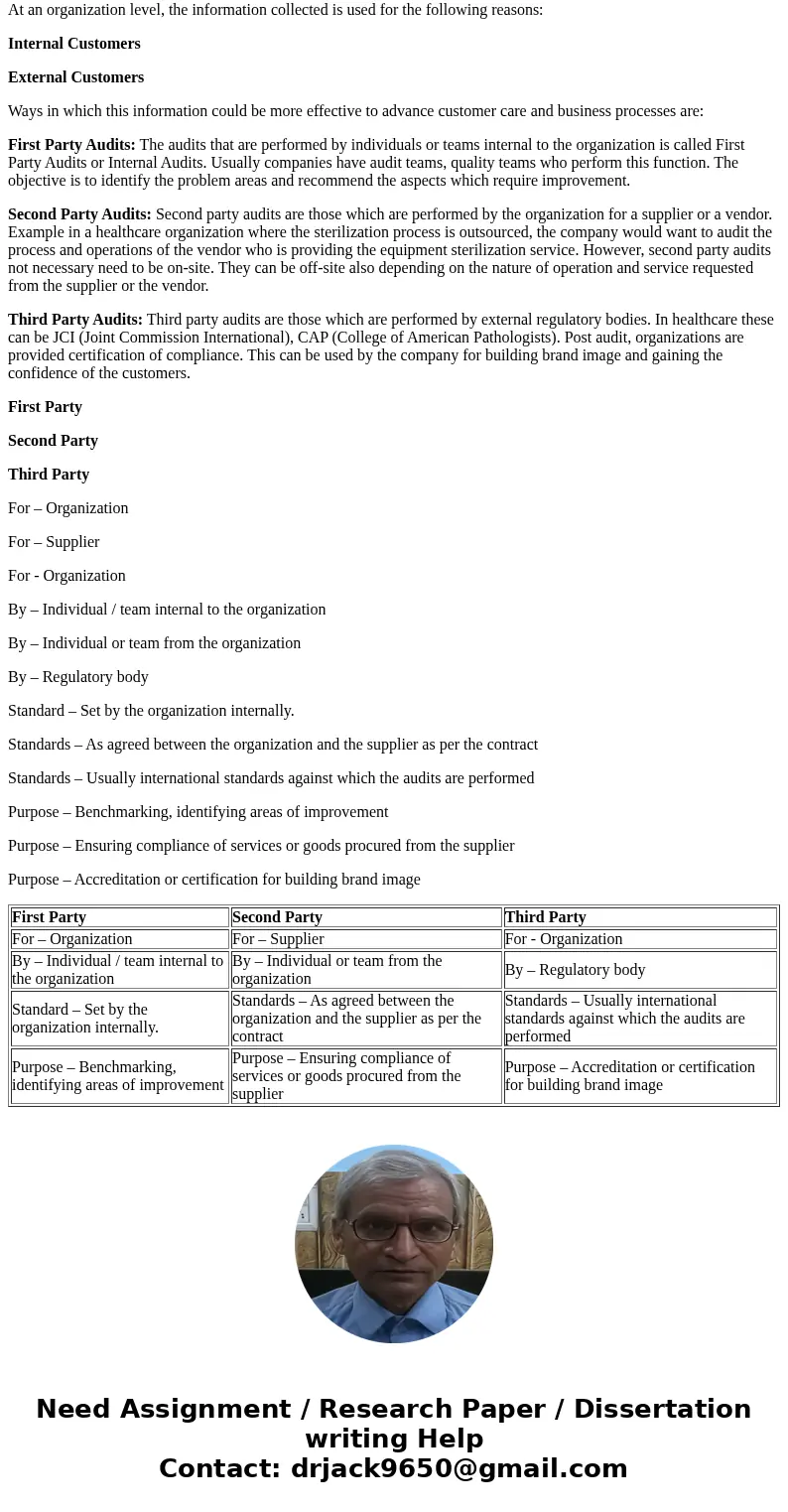Assessment Background Many organisations regard customer fee
Assessment Background Many organisations regard customer feedback as solely the collection and analysis of customer complaint data. While this is an important activity, it is only a small part of what should be done to understand how our customers see us and how to improve our performance. The latest edition of ISO 9000 lays great emphasis on what is called “Customer Focus” and organisations are now required to proactively discover just how their customers see them. This will of course, commence with a far reaching and effective system of logging and investigating customer complaints and comments. Total Quality Management (TQM) takes this a stage further and considers customers both internal and external to the organisation and uses this approach in combination with the process approach to support quality and business improvement.
Assessment Tasks Give an Introduction to the report – 10 % of marks
For an organisation that you have current or previous experience of:
1. Identify their customers both internal and external. (It is expected that you identify at least 4 customers. e.g. 2 internal & 2 external) 10% of marks
2. For each of the customers you have identified in Task 1 identify the following: i) formats both formal or informal (telephone, memo etc.) in which information is gained from these customers ii) the nature of and/or reason for collecting this information iii) how this information is presently used to monitor or improve customer care and business processes iv) any ways in which this information could be more effectively used to advance customer care and improve business processes 50% of marks
3. Explain the main differences between first party, second party and third party audits and how these relate to the supplier / customer relationship. Include a diagram/s if this helps explain your answer. 30% of marks. Assignment format This could be presented in a report or table format.
Solution
Information from customers, both internal and external is of crucial importance. The process of obtaining data and then processing it into meaningful information has become a key objective of every organization. However, what’s important is to ensure you get the right information, from the right people at the right time. For this, it is extremely important to select the methodology and process in which the information is collected. Below given is an example of a healthcare organization briefly describing the information collection process.
Identifying Customers – Before understanding what the customers want, it is crucial to understand what we want from the customers. Clearly defining the scope and the objective of the information gathering process, helps in selecting the right customers for your activities. An organization may have multiple internal as well as external customers. For the healthcare organization ABC, following are the examples of internal and external customers that we have considered for our report.
Internal Customers
External Customers
2) Formats for collecting information from Internal Customers both Clinical and Non Clinical Staff are:
Formal
Informal
Formats for collecting information from External Customers are:
Patient
Formal
Informal
No informal mode is used or gathering information as the details required for business have to be specific and not general
Family of the Patients
Formal
Informal
No informal mode is used or gathering information as the details required for business have to be specific and not general
Any data that is collected from customers, both internal and external is appreciated and acknowledged for further processing by the organization. This data is handed over to the MIS team (Management Information System) who then process it to make some meaningful interpretation.
Each department extracts information that is relevant to their operations and uses it for improving their own operations and the services provided by them. Some of the team that use this information are BIU team (Business Intelligence Unit), Quality team, CPESE team (Center for Patient Experience and Staff Engagement) and MR team (Medical Records).
At an organization level, the information collected is used for the following reasons:
Internal Customers
External Customers
Ways in which this information could be more effective to advance customer care and business processes are:
First Party Audits: The audits that are performed by individuals or teams internal to the organization is called First Party Audits or Internal Audits. Usually companies have audit teams, quality teams who perform this function. The objective is to identify the problem areas and recommend the aspects which require improvement.
Second Party Audits: Second party audits are those which are performed by the organization for a supplier or a vendor. Example in a healthcare organization where the sterilization process is outsourced, the company would want to audit the process and operations of the vendor who is providing the equipment sterilization service. However, second party audits not necessary need to be on-site. They can be off-site also depending on the nature of operation and service requested from the supplier or the vendor.
Third Party Audits: Third party audits are those which are performed by external regulatory bodies. In healthcare these can be JCI (Joint Commission International), CAP (College of American Pathologists). Post audit, organizations are provided certification of compliance. This can be used by the company for building brand image and gaining the confidence of the customers.
First Party
Second Party
Third Party
For – Organization
For – Supplier
For - Organization
By – Individual / team internal to the organization
By – Individual or team from the organization
By – Regulatory body
Standard – Set by the organization internally.
Standards – As agreed between the organization and the supplier as per the contract
Standards – Usually international standards against which the audits are performed
Purpose – Benchmarking, identifying areas of improvement
Purpose – Ensuring compliance of services or goods procured from the supplier
Purpose – Accreditation or certification for building brand image
| First Party | Second Party | Third Party |
| For – Organization | For – Supplier | For - Organization |
| By – Individual / team internal to the organization | By – Individual or team from the organization | By – Regulatory body |
| Standard – Set by the organization internally. | Standards – As agreed between the organization and the supplier as per the contract | Standards – Usually international standards against which the audits are performed |
| Purpose – Benchmarking, identifying areas of improvement | Purpose – Ensuring compliance of services or goods procured from the supplier | Purpose – Accreditation or certification for building brand image |



 Homework Sourse
Homework Sourse